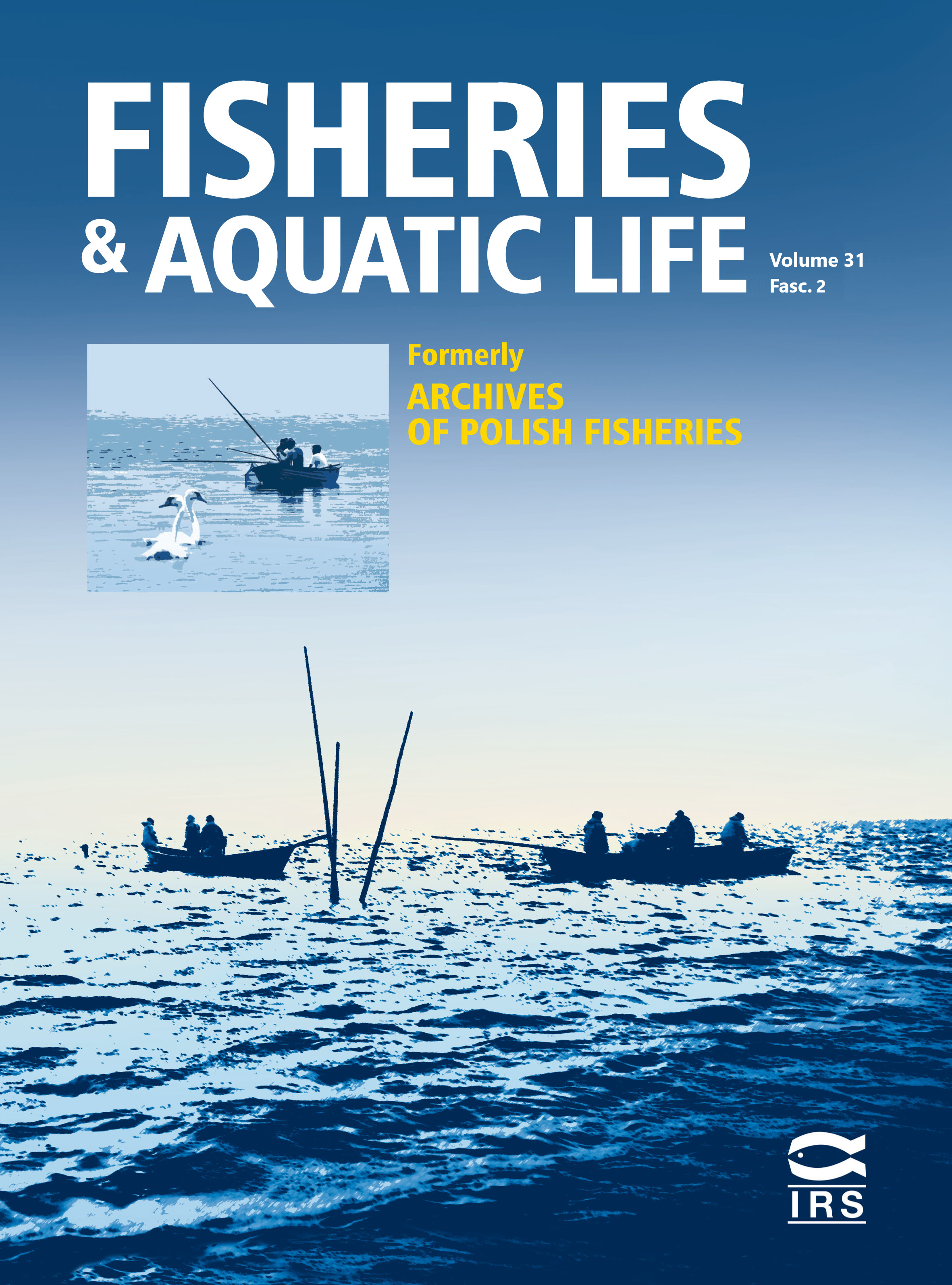UDN-like disease in spawners of salmonid fishes from the Rega, Parsęta, Wieprza, and Słupia rivers in 2009-2012
Abstract
Since 2007 in Poland, skin lesions have been observed in salmon (Salmo salar L.) and sea trout (Salmo trutta L.) entering Pomeranian rivers to spawn. The clinical picture of affected fish resembled ulcerative dermal necrosis (UDN), a disease of unknown etiology affecting mainly the scalps of wild salmonids. The aim of the 2009-2012 study was to determine with microbiological tests the etiological agent of the skin lesions observed in salmonids entering the Pomeranian rivers. During the study, a total of 13 species of Gram-negative bacteria belonging mainly to the Yersiniaceae, Enterobacteriaceae, and Pseudomonadaceae families were isolated and identified from the skin and kidneys of diseased fish. The Gram-positive bacteria isolated were aerobic,
hemolytic granules of the genus Streptococcus. Mycological examinations on damaged fish body surfaces revealed yeasts of the genus Rhodotorula and fungi of the family Saprolegniaceae. The results of our study did not permit us to identify unequivocally the direct cause of the fish diseases analyzed since all the bacteria isolated during the study are normally found in aquatic environments. Some of the isolated bacteria identified were assumed to be potentially pathogenic to fish. The fungal infections observed were probably secondary and only exacerbated ongoing disease processes.

